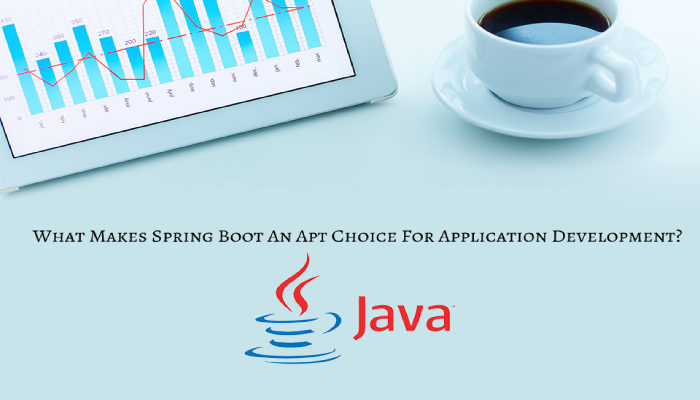
What Makes Spring Boot An Apt Choice For Application Development?
The Spring framework is one of the acclaimed Java-based frameworks used for Java web application development. The fact that it offers a wide range of features that address diverse business needs makes it better than other frameworks that are typically confined to one area. While it offers the flexibility to configure beans in different ways such as Annotations, XML, and JavaConfig, it can become complex and error-prone because of the large number of features it offers.
Consequently, the framework came up with Spring Boot that is great news for every Java development company. It simplifies the developers’ job by reducing the configuration complexities and cutting down the development time. Boot essentially refers to the automated features that are based on the configuration of Java rather than that of XML. It substitutes the normal spring XML files for speeding up the development process.
What Spring Boot Means?
Spring Boot is nothing but existing Spring Framework combined with some embedded HTTP Servers (Tomcat/Jetty etc.) and with little or no XML or Annotations Configurations.
Why Choose Spring Boot?
• Spring Boot makes the Java mobile applications and Java web application development, unit test, and integration test processes much easier and faster.
• It provides some defaults that reduce development, unit test, and integration test time significantly.
• You may use Spring Boot to increase productivity.
Main Objectives of Spring Boot Framework
Every Java development company strives to deliver Java mobile applications and web applications to clients. Spring Boot Framework helps in reducing the development, unit test, integration test time and makes the process much easier compared to existing Spring Framework. The main goals of Spring Boot are:
• To fully eliminate XML Configuration
• To eliminate defining more Annotation Configuration. Spring Boot combined some existing Spring Framework Annotations to a simple and single Annotation.
• To eliminate the need for writing lots of import statements
• To provide some defaults to start new projects in quick time
• To provide the Opinionated Development approach for application development
How Spring Boot Can Level Up Your Java Application Development
Here are some other reasons that Spring Boot makes a great choice for Java web application development.
• Spring Boot makes it easier for developers to build Spring-based applications with Java or Groovy.
• It cuts down lots of development time and increases productivity.
• It eliminates the need to write lots of boilerplate Codes, Annotations, and XML Configuration.
• Spring Boot Application can be easily integrated with its Spring Ecosystem including Spring JDBC, Spring ORM, Spring Data, Spring Security, and more.
• It employs the “Opinionated Defaults Configuration” approach to reduce the developer’s effort and time.
• Spring Boot provides embedded HTTP servers such as Tomcat, Jetty, etc. to easily develop and test web applications.
• It comes with the CLI (Command Line Interface) tool that allows development and testing of Spring Boot (Java or Groovy) Applications from command prompt very easily and quickly.
• Spring Boot offers a plethora of plugins to develop and test Spring Boot applications very easily using Build Tools such as Maven and Gradle.
• It also provides lots of plugins to work with embedded and in-memory databases very easily and quickly.
What Makes Spring Boot an Ideal Choice for Java Application Development
1. Open-source
Being open-source software, Spring Boot makes an excellent and cost-effective option for businesses. Despite being open-source, it is still reliable as it is backed by Pivotal, a company that offers tools and platforms for building better software. This is another reason that businesses prefer this framework.
2. Maturity
As Spring Boot is based on Spring, it has the much-needed maturity that a framework needs to render result-oriented applications. The Spring Framework itself has been around for more than 15 years and is regarded as an ideal alternative to the Java Enterprise stack because it is lightweight in nature. Developers can leverage it to create enterprise-grade applications without handling the bloated JEE stack.
3. Stability
The stability of the core modules is another reason that works in favor of the Spring ecosystems. These have been stable since long and a majority of changes are backward compatible. Any changes in them are declared well before a release, which gives plenty of time to ensure a seamless migration to the new versions.
Also Read: Top Java Frameworks for Enterprise Application Development in 2020
4. Connectivity
With Spring, it is easy to connect the application to relational databases, queue services, or NoSQL databases or. Furthermore, it offers extensive support for Oracle, MySQL, PostgreSQL, ElasticSearch, Redis, Solr, MongoDB, Rabbit MQ, ActiveMQ, and more, which makes it a well-connected framework.
5. Flexibility
Spring Boot is a flexible development framework as it enables the development of a variety of applications. From a typical server-side rendered web applications to regular command-line applications, RESTful and other Web-APIs, and more, there are several different types of applications that can be created with Spring Boot.
6. Cloud-native
Spring Boot is all set for cloud out-of-the-box as it follows the deployment-principles of cloud applications. This makes it possible to build distributed systems with the framework fast and easily. Moreover, there are the options to run it on your own server, Containers VMs, or host on AWS or Heroku, as you may want to.
7. Based on Java Virtual Machine (JVM)
Spring is based on the Java Virtual Machine (JVM), which is a tried and tested stack for running mission-critical applications for more than two decades. Spring Boot applications can be developed in a JVM language because of the close interconnection between the two.
8. Developer-friendly
If you hire Java developer for creating an application, they would definitely prioritize Spring Boot because of the ease and speed it renders with the “opinionated defaults configuration” approach. It minimizes the need to write multiple boilerplate codes, annotation, and XML configuration, which saves the development time and enhances the productivity manifold.
9. Extensive Resources
Another advantage of Spring Boot is that it has plenty of resources and documentation available for resolving bugs and problems with the applications made in this framework. Also, if you’re looking for solid Spring Boot based solutions, you may approach a Java development company and hire Java developers with strong expertise in Spring Boot. Also, there are several plugins available for developing and testing Spring Boot applications with ease.
10. Spring Boot Starter Projects
Every Java development company needs to identify the framework to be used, versions of those frameworks, and how to connect them to build fully-functional Java mobile applications or Java web applications. According to the documentation, starters are sets of convenient dependency descriptors that you can include in your application. For example, if you want to develop an application or an application to expose restful services, Spring Boot Starter Web is an ideal option. You can create a Spring Boot project using Spring Initializr with just what you need to get started quickly.
A standard web application will use the following dependencies:
• Spring – Core, Beans, Context, Aspect-Oriented Programming
• Web MVC – Spring MVC
• Jackson – For JASON Binding
• Input Validation – Hibernate Validation, Validation API
• Embedded Servlet Container – Tomcat
• Logging – Logback, Simple Logging Facade for Java (SLF4J)
And guess what? Spring Boot Starter Web comes with all these dependencies pre-packaged. A developer no longer has to worry about these dependencies or their compatible versions.
Conclusion
Since Spring Boot is integrated on an existing Spring Framework rather than being implemented from scratch, it is easy to embrace for existing and new applications. However, converting the existing ones to Spring Boot can be complicated and time-consuming. So, it is better to avail professional Java web application development services for the same. Here, it becomes critical to hire Java developers who have hands-on experience in Spring Boot. Whether you are looking for a Java web application development or development of Java mobile applications, Java India is a name that you can trust. Just share your requirements with us and we will create an apt solution with Spring Boot to empower your business.
FAQs

Q.1. What are the key features of Spring Boot?
Ans. The key features of Spring Boot include:
• Web Application Development
• Spring Application
• Properties Files
• Admin Highlights
• Application occasions and listeners
• Externalized Configuration
• Type-safe Configuration
• YAML Support
• Logging
• Security
Q.2. Can we use Spring Boot with applications not using Spring?
Ans. No, Spring boot can only be used with Spring applications.
Q.3. What is the Spring Boot Initilizr?
Ans. Spring Boot Initilizr is a web interface used to quickly create Spring Boot projects. Using this powerful tool, you can create Maven and Gradle projects.
Have more questions? Get in touch with our Java developers today!

